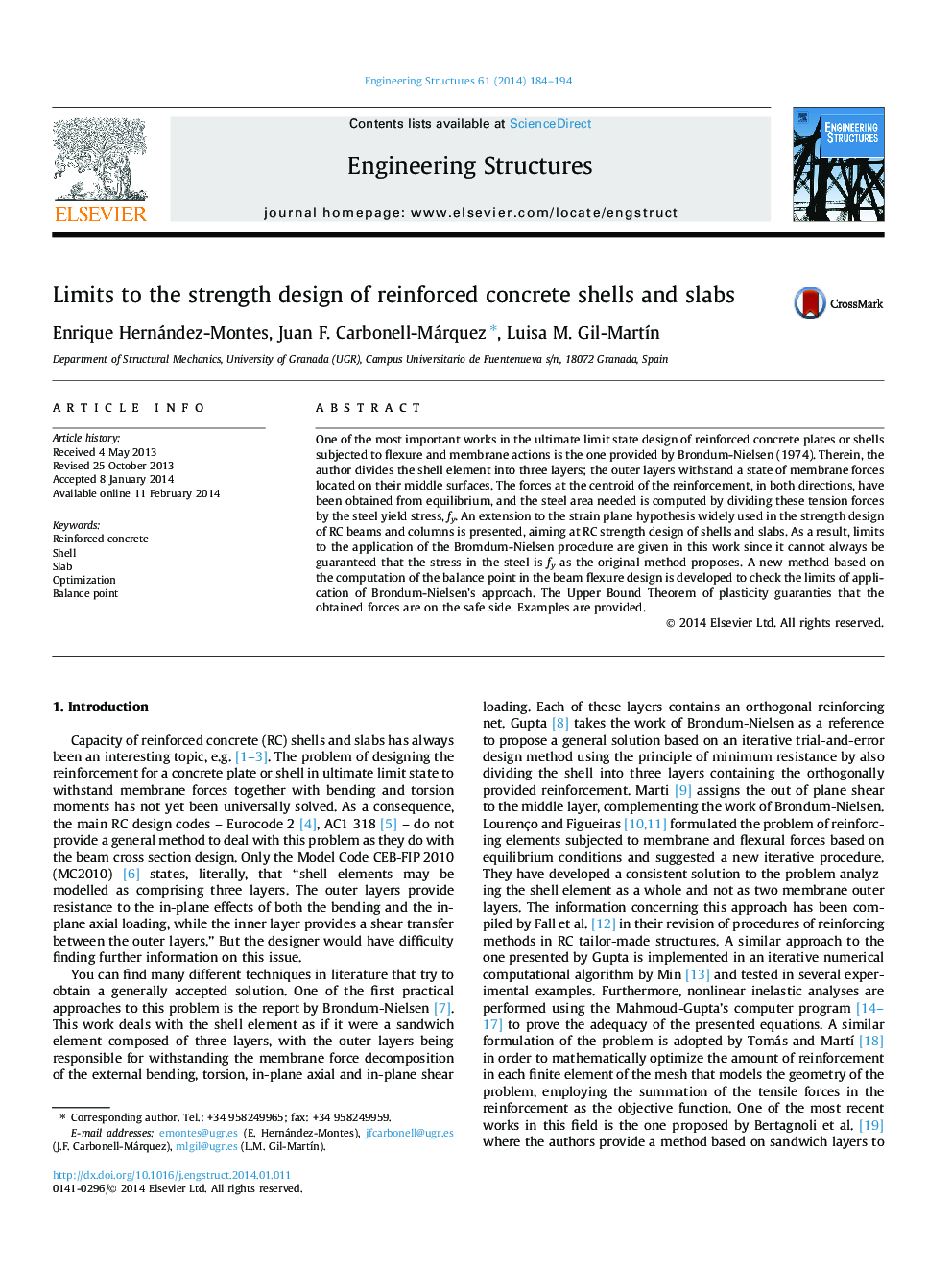| Article ID | Journal | Published Year | Pages | File Type |
|---|---|---|---|---|
| 266890 | Engineering Structures | 2014 | 11 Pages |
•Slabs in a similar way to beams present a hypothesis related to plane deformation.•The plane section hypothesis is used in strength design of beams.•No deformation hypothesis is used in strength design of slabs.•This paper presents a deformation hypothesis for strength design of RC slabs.
One of the most important works in the ultimate limit state design of reinforced concrete plates or shells subjected to flexure and membrane actions is the one provided by Brondum-Nielsen (1974). Therein, the author divides the shell element into three layers; the outer layers withstand a state of membrane forces located on their middle surfaces. The forces at the centroid of the reinforcement, in both directions, have been obtained from equilibrium, and the steel area needed is computed by dividing these tension forces by the steel yield stress, fy. An extension to the strain plane hypothesis widely used in the strength design of RC beams and columns is presented, aiming at RC strength design of shells and slabs. As a result, limits to the application of the Bromdum-Nielsen procedure are given in this work since it cannot always be guaranteed that the stress in the steel is fy as the original method proposes. A new method based on the computation of the balance point in the beam flexure design is developed to check the limits of application of Brondum-Nielsen’s approach. The Upper Bound Theorem of plasticity guaranties that the obtained forces are on the safe side. Examples are provided.
